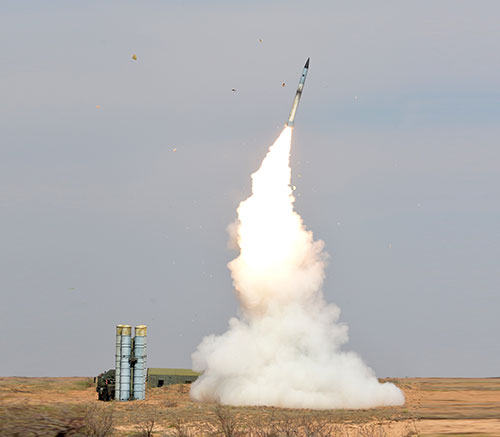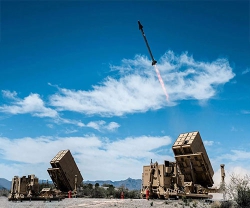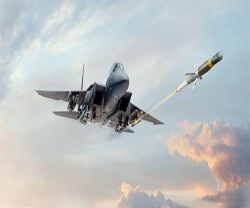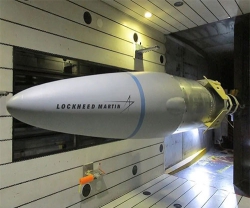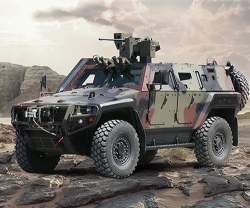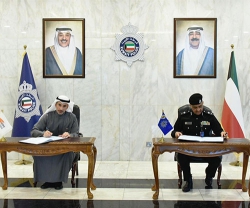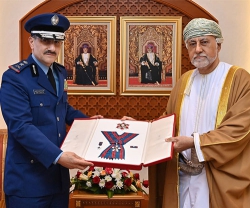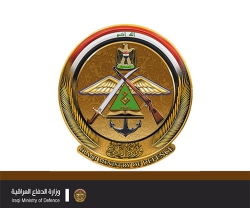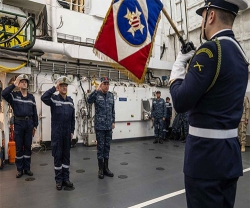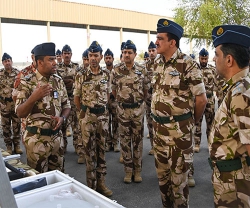The Russian Ministry of Defense (MoD) recently reported about the military exercises of the Eastern Military District (which covers Eastern Siberia and the Far East).
On April 28th, as a part of the war game, the S-400 Triumph (SA-21 Growler by NATO classification) Long Range Air Defense System successfully tracked, intercepted and destroyed a practice ballistic target at a distance of 400 km at the Telemba testing range located at Republic of Buryatia, about 200 km east of Baykal Lake.
According to the MoD statement, “a simulated foe launched ballistic missiles to destroy the infrastructure objects at the military base. The S-400 crews locked on the targets at about 400 km distance to track and destroy them all”.
The military mentioned that several Favorite-RM and Armavir hypersonic target missiles were used to imitate ballistic missiles. The exercises seem to be the first officially confirmed S-400 tests against the high-speed ballistic missiles simulation.
The S-400 Triumph is a further derivative of the world-famous S-300 Long Range ADS being intended for engagement of strategic and tactical aircraft, as well as all types of missiles, including ballistic, cruise and hypersonic.
According to the open data at the web site of Rosoboronexport, Russian only state mediator in defense trade, the S-400 system is capable of hitting aerodynamic (aerial) targets at ranges of up to 400 km, as well as ballistic targets at ranges of up to 60 km, flying at speeds of up to 4.8 km/s (Mach 14). The system is capable to destroy aerial targets at altitudes from 10 m to 27 km, while ballistic missiles at altitudes from 2 to 27 km. The engagement range is reported as 3-250 km for aerial and 5-60 km for ballistic targets respectively. The system is capable to operate in a heavy electronically contested environment.
According to RIA Novosti, one S-400 system comprising up to eight divisions (battalions) can control up to 72 launchers, with a maximum of 384 surface-to-air missiles (SAM) and guide up to 180 SAM simultaneously tracking up to 80 aerial targets.
According to Army Recognition independent web site, such figures are to provide S-400 Triumph “with a positive market outlook. Compared to its closest competitor, the US-made Patriot Advanced Capability 3 ADS, the S-400 engages almost twice as many aerial targets (the PAC-3 keeps its eye at some 40 aerial vehicles) and has an advantage in terms of tracking (the PAC-3 tracks some 125 aerial targets)”.
The S-400 ADS could be even more attractive counting its cost-efficiency ratio, and Rosoboronexport readiness to deal on the buyers’ national currencies and provide technology transfers.
The S-400 current operators include the Russian Federation with at least 57 divisions as of 2019 plus two covering the Russian forces in Syria. In June, 2016 two divisions were delivered to Republic of Belarus as a strategic aid in the frame of the United State.
In 2014 Rosoboronexport concluded a contract with PR China on a non-specified number of S-400 divisions. According to the ITAR-TASS, deliveries started in January 2018, being followed by firing exercises in August 2018.
Despite extremely strong US opposition, both Turkey and India concluded contracts on S-400 acquisition. Turkey signed the deal worth USD 2.4 billion in late 2017. By now, 4 batteries consisting 36 fire units and 192+ missiles were delivered to Turkey.
The Republic of India rejected US anti-Triumph blackmail as well. The deal worth of $US 5.43 billion was signed on 5 October 2018, ignoring US CAATSA act. The deliveries are expected to be concluded by the end of 2020.
There were various reports that Saudi Arabia signed a deal for S-400 in 2017 but such reports were not confirmed till now.
Other possible customers for the Triumph may include Egypt, Iran, Iraq and Qatar.

